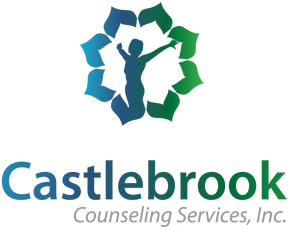How Can I Keep the Work Going Between Therapy Sessions? By Lauren Bouyea, LICSWOn average, therapy sessions are one hour a week. This leaves about 167 hours between meetings, and while this may sound like ample time to process the session and implement any suggestions, anyone balancing the busy schedule of life knows that time can slip away from us. Here are some suggestions on how to be more intentional about the therapy work you do outside of session:
1. Journaling Not only does journaling allow you to organize your thoughts, but it can also help you process any emotional responses that may have arisen during your therapy session. Did you walk away from therapy feeling lighter? Write down what that was like for you. Did your session remind you of a sensitive childhood memory? Explore that connection. Not only can this be beneficial to look back on in the future, it can serve as a jumping off point for your next visit. 2. Keep a List Many times when I ask clients about how things have gone in the past week, they are unsure what to share or cannot recall an important moment. Keep a running list of such instances on your phone to reference! Not only does this help fuel sessions, but it also serves as a reminder to remain aware of your day-to-day as you jot things down. Some examples of what to record are times when you utilized a new skill, moments that felt emotionally triggering, or things that you are grateful for. 3. Set Alarms Having a little alarm clock right in your pocket is a handy way to remind us of therapy homework! Set alarms to write down three things that occurred that day, to practice a skill, to notice how you are feeling, or even to just reflect daily on your goals. This can help build the habit of incorporating your therapy work outside of the office and you’ll see this reflected in your progress! 4. Practice Therapists teach LOTS of skills! Like with any type of learning, mastery requires practice. You don’t need to be in the throes of an emotional storm to test out your skills either. In fact, I suggest running through different skills when you are NOT upset in order to practice with lower stakes. A football player would not show up to the big game without having practiced running plays and I don’t suggest that you face down a panic attack without having practiced the breathing technique that your therapist taught you last month. The more you practice, the more skills will come naturally when you need them most! 5. Accountability While self-discovery and healing can be a very personal journey, you don’t need to go on it alone. It can be beneficial to confide in a trusted person (other than your therapist!) about what you are working on and how they can support you. This can help hold you accountable as well since another person is aware of your goals, and with permission, can give you a nudge if needed. 6. Self-care A final way to keep your therapy work in the forefront of your brain is to take care of yourself. While attending therapy is its own type of self-care, we can all benefit from treating ourselves with gentle kindness. Move your body, cry when you need to, create and stick to your boundaries, take a nap, learn something new, or recharge with positive activities. There are endless examples of self-care ideas and they can each be difficult to implement in their own way. Go slow and remind yourself that you are worthy of this care. Progress in therapy looks different for everyone and is dependent on many factors. We often say that the real work of therapy is what is done outside of the therapy session, and the suggestions above are ways to keep the momentum going!
0 Comments
What is EMDR?By David Polidi, LICSW, MEd“Freedom is what you do with what’s been done to you.” –Jean-Paul Sartre
We all experience trauma. I am not only speaking about the type of trauma that happens when we experience horrific things such as accidents, violence, or combat. I am also speaking about the injustices and personal violations that we all experience at some point in our lives…. Parents who were never attuned to our emotions or who were physically and verbally aggressive, other school children who taunted and humiliated us, caregivers struggling through their own addictions and mental health issues, and on and on…. Having these moments in our lives does not mean that we have trauma. Trauma is defined by our experience of these things. When we are in a situation and feel overwhelmed/ disoriented, and our bodies are not sure how to keep us safe, events can stay stuck inside of our memory. We can be reminded of these events over and over again, and even when we are in a relatively safe space, our bodies can feel as if we have traveled back to the original disturbing event. It can feel as if we are being threatened over and over again– this is trauma. EMDR is one strategy that can be used within therapy to help recover from trauma. Francine Shapiro, who developed EMDR therapy, shared that she sees this as a form of “reprocessing therapy.” Traumatic memories in the body and brain are unlocked, processed and then released from our bodies so we are no longer impacted by the intensity and terror that go along with trauma. EMDR stands for Eye Movement Desensitization and Reprocessing. In early stages of the development of this protocol, the therapist would have the client move their eyes back and forth simulating REM sleep, and this seemed to help them go into a state where the trauma memories could be accessed on a somatic level. More recently, therapists practicing EMDR have found other ways to help someone tap into these emotions and experiences, and so while some therapists continue to help someone use eye movements, there are other ways to stimulate the same areas of the brain. EMDR is one of the only forms of therapy that is scientifically proven to have positive results in trauma processing. While the exact mechanisms are still somewhat unclear, EMDR rewires how the brain recalls and remembers traumatic events. EMDR integrates well with other forms of therapy, such as the traditional talk therapy approaches and works to help clients increase their hope, resiliency and their innate ability to move in a more positive direction in their life. Although research has shown that the most successful therapy depends on the relationship that is created between you and your therapist, it could also be helpful to get a better understanding of what models of therapy your therapist feels comfortable using, what models they find to be most effective and for what types of presenting problems. As you learn more about the different types of therapeutic models that are out there, you can see what type of therapy resonates with you, and what you would like to explore in your own path to healing.
|
Archives
April 2025
Categories |
Mission Statement
Castlebrook Counseling Services, Inc. is a group of private practice clinicians with a shared goal of strengthening our community by providing therapy and clinical support designed for children, adults, and families to successfully meet life’s challenges.
 RSS Feed
RSS Feed

